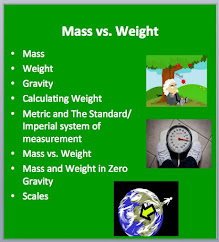Mass vs. Weight: Understanding the Fundamental Difference
The terms "mass" and "weight" are often used interchangeably in everyday conversation, but in the realm of science and physics, they have distinct meanings. Understanding the fundamental difference between mass and weight is crucial in various fields, from physics and engineering to everyday activities such as shopping or dieting. In this article, we will delve into the key concepts of mass vs weight, examining their definitions, units of measurement, and how they relate to each other.
I. Defining Mass
Mass: The Measure of Inertia
Mass is one of the fundamental properties of matter, representing the amount of material in an object. It is an intrinsic property, meaning it does not change regardless of an object's location in the universe. In simple terms, mass is the measure of an object's resistance to changes in motion, also known as inertia. This concept is encapsulated in Isaac Newton's first law of motion, which states that an object at rest tends to stay at rest, and an object in motion tends to stay in motion, unless acted upon by an external force. Mass determines how much force is required to accelerate or decelerate an object.
Units of Measurement for Mass
The standard unit of measurement for mass in the International System of Units (SI) is the kilogram (kg). The kilogram is defined as the mass of the international prototype of the kilogram, a platinum-iridium alloy cylinder stored at the International Bureau of Weights and Measures in France.
II. Understanding Weight
Weight: The Force of Gravity
Weight, on the other hand, is a force. It is the result of gravitational attraction between an object and the celestial body it is located on, such as Earth. Weight depends on the mass of an object and the strength of the gravitational field it experiences. This force is what gives objects weight and determines how heavy they feel.
Units of Measurement for Weight
Weight is typically measured in newtons (N) in the SI system. However, it is often expressed in kilograms or pounds as well. In these cases, weight is effectively measured in mass units (kg or lb) but is referred to colloquially as "weight."
III. The Fundamental Difference
Mass Remains Constant, Weight Varies
The fundamental difference between mass and weight is that mass is an intrinsic property of matter that remains constant regardless of an object's location, while weight depends on the gravitational field an object is exposed to and, therefore, can vary depending on the location.
For example, let's consider a 100 kg object. If it were on Earth, its weight would be approximately 981 newtons (100 kg multiplied by the acceleration due to gravity on Earth, which is approximately 9.81 m/s²). However, if the same object were on the Moon, where the gravitational field is weaker, its weight would be significantly less, around 1/6th of its Earth weight. In this case, its mass would still be 100 kg, but its weight would only be about 163.5 newtons on the Moon.
Mathematical Relationship
To mathematically express the relationship between mass (m), weight (W), and gravitational acceleration (g), we use the equation:
W=m⋅g
Where:
W is the weight in newtons (N)
m is the mass in kilograms (kg)
g is the gravitational acceleration in meters per second squared (m/s²)
IV. Practical Implications
Shopping and Mass vs. Weight
Understanding the difference between mass and weight has practical implications. When you buy groceries or any other products, you are paying for the mass of the items, not their weight. However, scales in stores often display weight in kilograms or pounds. This is because when we pick up a product, what we feel is its weight due to gravity, even though we are technically measuring its mass. This can lead to confusion but highlights the distinction between mass and weight.
Dieting and Fitness
For those watching their weight, it's essential to understand the difference between mass and weight. When you step on a scale, it measures your weight, which is influenced by both your mass and the gravitational field of the Earth. To lose weight, you need to reduce your mass (typically through diet and exercise) rather than change your gravitational environment.
V. Mass and Weight in Space
Microgravity Environments
The distinction between mass and weight becomes particularly evident in microgravity environments, such as the International Space Station (ISS). In space, astronauts experience a sensation of weightlessness, but their mass remains unchanged. This paradoxical situation occurs because, while the ISS orbits Earth, it and everything on board are in freefall, constantly falling towards Earth due to gravity. As a result, objects and astronauts experience a state of apparent weightlessness, despite their mass remaining constant.
Different Planets, Different Weights
The difference between mass and weight becomes even more pronounced when considering other celestial bodies. For example, a person with a mass of 70 kg on Earth would weigh approximately 686 newtons. If the same person were on Mars, where the gravitational acceleration is about 3.72076 m/s², their weight would be significantly less, around 260 newtons. However, their mass would remain the same at 70 kg. This illustrates the importance of considering the local gravitational field when discussing weight.
Read Also: The Significance of Primary School Tuition in a Child's Education
VI. Conclusion
In summary, mass and weight are distinct but interconnected concepts in the world of physics. Mass is an intrinsic property of matter that remains constant regardless of an object's location, whereas weight is the force exerted on an object due to gravitational attraction and varies with location. Understanding this fundamental difference is essential for various applications, from everyday activities like shopping to scientific endeavors like space exploration. Whether you're calculating your weight on another planet or contemplating a diet plan, recognizing the distinction between mass and weight is crucial for accurate measurements and informed decision-making.




Comments
Post a Comment